Article and photos by Elena del Valle
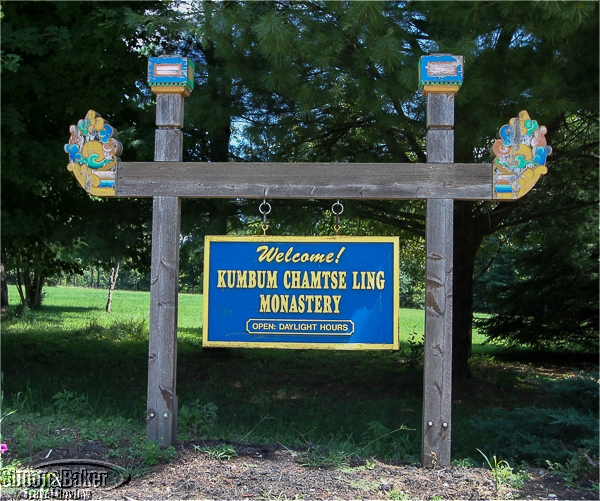
One of two signs at the entrance to the Kumbum Chantse Ling Monastery in Bloomington, Indiana
My favorite attraction during a three-day visit to Bloomington, Indiana was the Tibetan Mongolian Buddhist Cultural Center (TMBCC). As soon as we arrived at the brightly painted Tibetan style entrance gate I was transported back to Asia. A scant five miles from the city center the 108-acre property housed Chamtse Ling Temple, Cultural Building, two traditional Tibetan stupas, four retreat cottages, a Teaching Pavilion and two private residences. In the Cultural Building, where I and my tour group spent most of our time, there was a library, a kitchen, community space and an amply stocked gift shop.
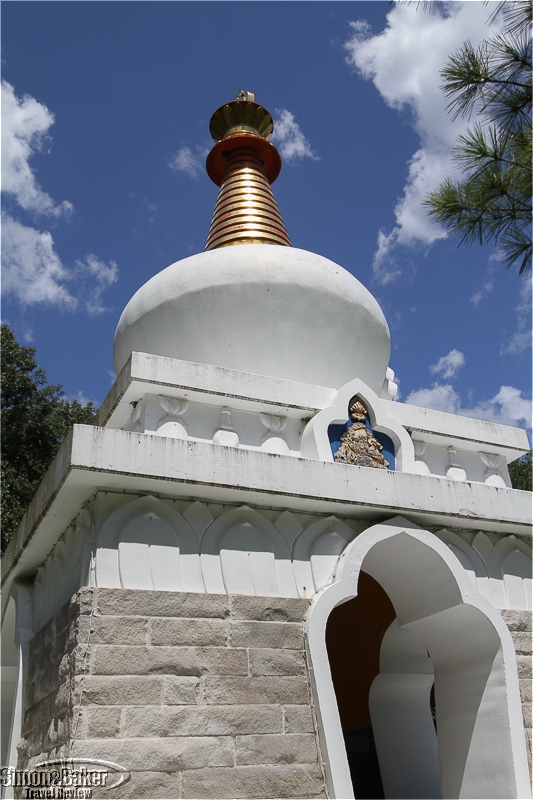
The stupa at the Tibetan Mongolian Buddhist Cultural Center
Founded in 1979, the Center’s three main goals were to foster and preserve Tibetan and Mongolian cultures, provide Buddhist teachings to the community, and promote interfaith peace and harmony. As a monastery it had a permanent small monk population that lived onsite year round. The center and temple were open to the public.
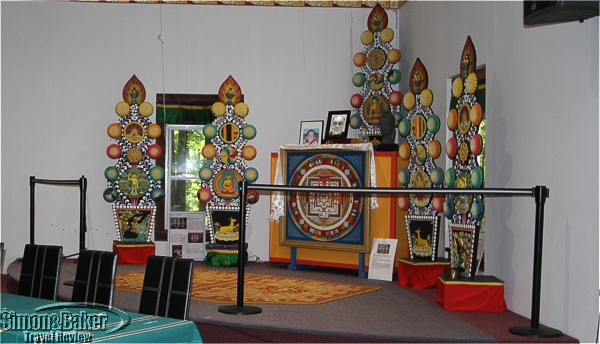
A meeting room at the Tibetan Mongolian Buddhist Cultural Center
We began by visiting the Cultural Building’s Main Hall, where we had lunch in an informal area adjoining the kitchen. Following the simple self serve meal of delicious noodle soup, corn on the cob, and lettuce with a memorable dressing (although there was hardly any lettuce by the time I had a chance to serve myself, the dressing was my favorite part), we moved to an adjacent meeting room.
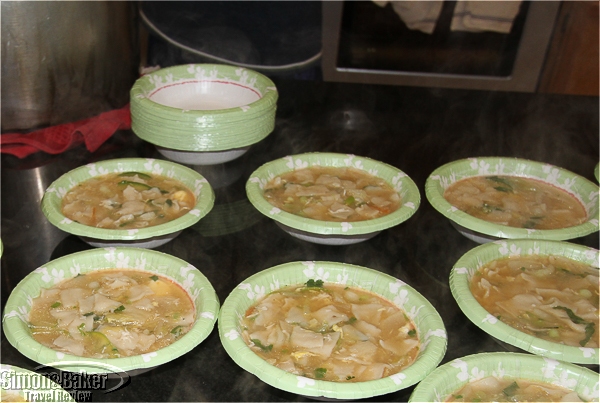
We had self serve noodle soup, corn on the cob, and lettuce salad for lunch
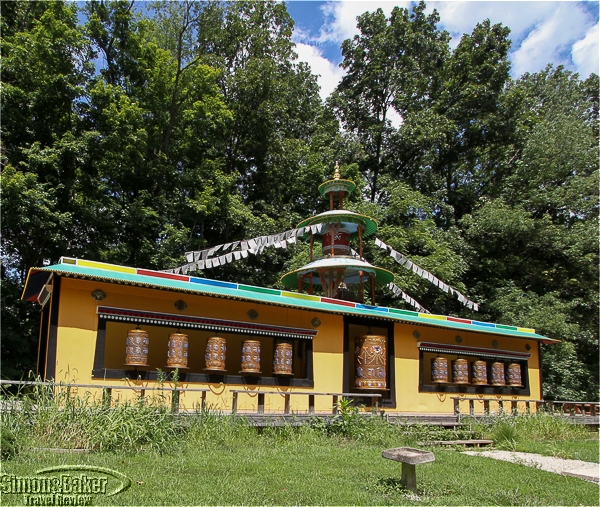
Wheels at the Tibetan Mongolian Buddhist Cultural Center
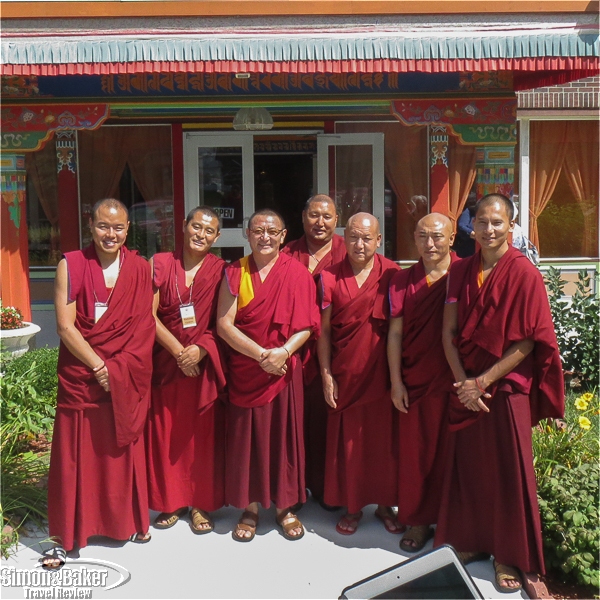
Tibetan monks from the Labrang Tashi Kyil and Tibetan Mongolian Buddhist Cultural Center, a refugee monastery in Dehra Dun, India
Seven Tibetan monks from the Labrang Tashi Kyil and Tibetan Mongolian Buddhist Cultural Center, a refugee monastery in Dehra Dun, India, were visiting the Center. One by one they recited their life stories. Most of them spoke in their native tongue while one of their colleagues translated in thickly accented English. A Center volunteer explained they were touring the United States to share a message of wisdom, and searching donations for their monastery, where 50 young monks from the Tibetan-Himalayan region were awaiting education and receiving healthcare.
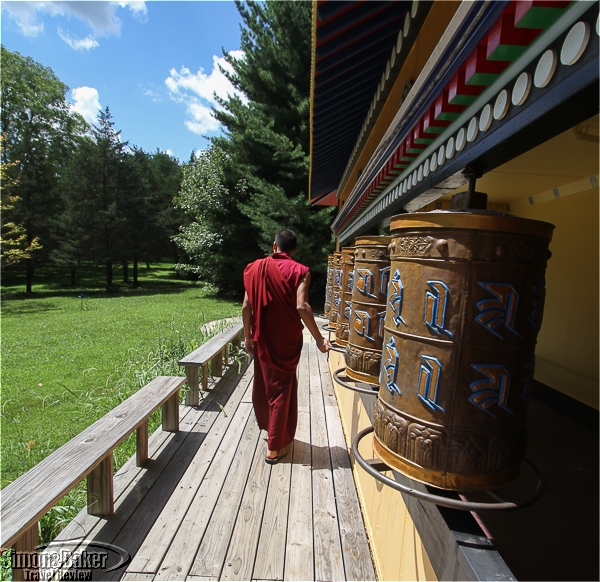
A monk walked by the wheels at the Tibetan Mongolian Buddhist Cultural Center
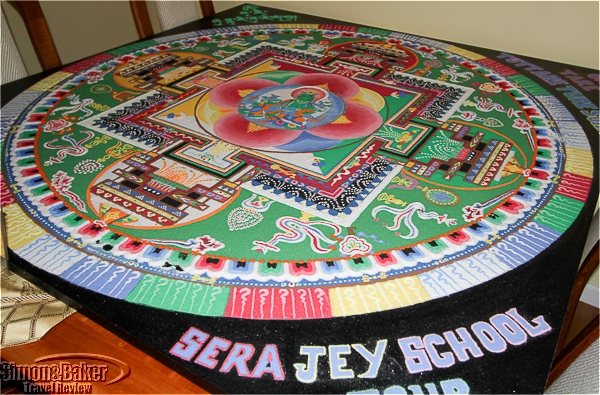
Tibetan style sand artwork in the Dalai Lama’s private quarters
From there we walked a short distance over a narrow paved path and green grass to the wheels and stupa en route to the Kumbum Chamtse Ling Monastery set aside for classes, meditation instruction and retreats. The upper floor, closed to the public, was home to the private quarters of the Dalai Lama, the religious leader of Tibetans.
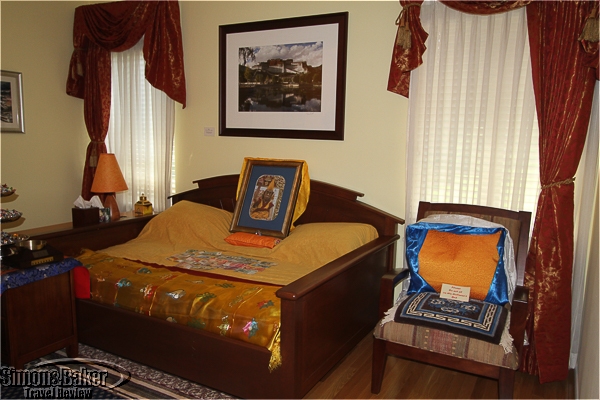
The Dalai Lama’s bedroom
The 501 (C) 3 nonprofit organization’s main sources of funding were programs, facility rentals, donations and guest lodging. I would recommend a stop at the Tibetan Mongolian Buddhist Cultural Center (3655 Snoddy Road, Bloomington, Indiana, 47408, United States, +1 812 336 6807, TMBCC.org, tmbcc.kc@gmail.com) to friends wishing to visit a Tibetan Buddhist temple in the United States. I enjoyed lunch, and the three-hour afternoon group tour, and would welcome the opportunity of a return independent visit with quiet time to further explore the center and its grounds.










I wanted to go on this tour, but opted for the fire station at the Hoosier National Forest. Thank you for posting such lovely photos and telling the story so well from the Buddhist Cultural Center!
I’m so glad you enjoyed it, Kathy. Thanks for letting me know! Elena